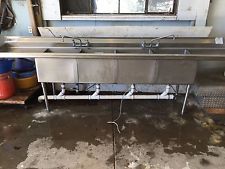Since knowledge and understanding of waterborne pathogens and their diseases are well illuminated, a few research publications on the prevalence of pathogenic microorganisms in various household sink drain pipes are often not extensively examined. Therefore, this study aims to (a) assess and monitor the densities of the bacterial community in the different natural biofilm that grow on plastic pipelines, (b) to detect Escherichia coli , Salmonella , and Listeria spp. from natural biofilm samples that are collected from the kitchen (n = 30), bathroom (n = 10), laboratories (n = 13), and hospital (n = 8) sink drainage pipes.
 Three bacterial species selected were assessed using a culture‐dependent approach followed by verification of isolates using both BIOLOG GEN III and polymerase chain reaction. The estimated number of each bacterium was 122 isolates, while 60, 20, 26, and 16 isolates were obtained from the natural biofilm samples, kitchen, bathroom, laboratories, and hospital, respectively. As for the tests, in all types of biofilm samples, the overall bacterial counts at low temperature (22°C) were higher than those at high temperature (37°C). Meanwhile, E . coli had the most significant number of bacterial microorganisms compared to the other two pathogens. Additionally, the most massive cell densities of E . coli , Salmonella , and Listeria species were discovered in the biofilm collected from the kitchen, then the hospital.
Three bacterial species selected were assessed using a culture‐dependent approach followed by verification of isolates using both BIOLOG GEN III and polymerase chain reaction. The estimated number of each bacterium was 122 isolates, while 60, 20, 26, and 16 isolates were obtained from the natural biofilm samples, kitchen, bathroom, laboratories, and hospital, respectively. As for the tests, in all types of biofilm samples, the overall bacterial counts at low temperature (22°C) were higher than those at high temperature (37°C). Meanwhile, E . coli had the most significant number of bacterial microorganisms compared to the other two pathogens. Additionally, the most massive cell densities of E . coli , Salmonella , and Listeria species were discovered in the biofilm collected from the kitchen, then the hospital.
Statistically, the results reveal that there is a positive correlation (p ≥ .0001) with significance between the sources of biofilm. This work certainly makes the potential of household sink drain pipes for reservoir contagious pathogens more explicitly noticeable. Such knowledge would also be beneficial for prospective consideration of the threat to human public health and the environment.
Prevalence of E. coli, salmonella, and listeria spp. as potential pathogens: A comparative study for biofilm of sink drain environment
Journal of Food Safety
Mohamed Azab El‐Liethy, Bahaa A. Hemdan, Gamila E. El‐Taweel
https://doi.org/10.1111/jfs.12816
https://onlinelibrary.wiley.com/doi/abs/10.1111/jfs.12816?af=R



.jpg) inserting the catheters. The steps were: Wash hands. Cover the patient with sterile drapes. Clean the skin with chlorhexidine antiseptic. Do not insert catheters into the groin area. Remove catheters as soon as they are no longer needed.
inserting the catheters. The steps were: Wash hands. Cover the patient with sterile drapes. Clean the skin with chlorhexidine antiseptic. Do not insert catheters into the groin area. Remove catheters as soon as they are no longer needed. Inspectors found cooked crawfish being stored at the wrong temperature, live crawfish in a sink next to dirty dishes, dirty floors – including dead crawfish on the floor of a walk-in freezer – and dried food debris caked to shelves and "clean" kitchen knives.
Inspectors found cooked crawfish being stored at the wrong temperature, live crawfish in a sink next to dirty dishes, dirty floors – including dead crawfish on the floor of a walk-in freezer – and dried food debris caked to shelves and "clean" kitchen knives. Three Anderson, California girls (right) decided to go for a dip in the sink at the local Kentucky Fried Chicken, and one of the girls thought only her close friends who would never tell would see the pics so she decided to share on MySpace.
Three Anderson, California girls (right) decided to go for a dip in the sink at the local Kentucky Fried Chicken, and one of the girls thought only her close friends who would never tell would see the pics so she decided to share on MySpace.